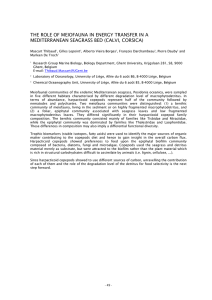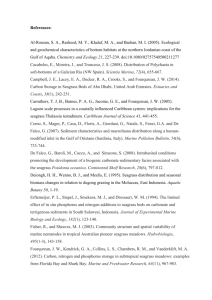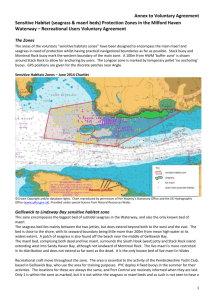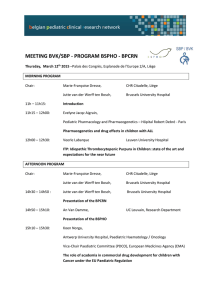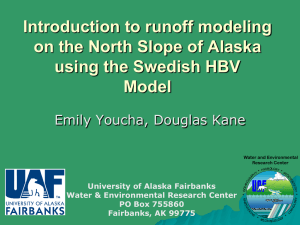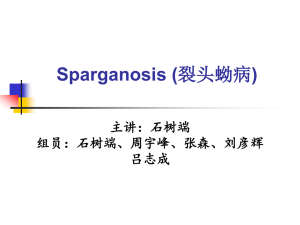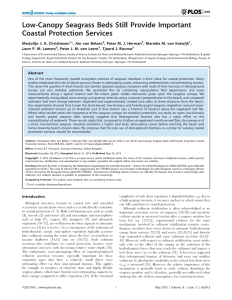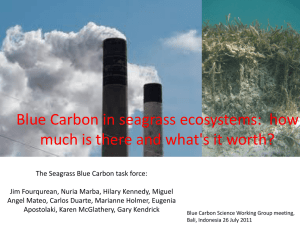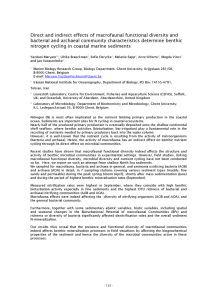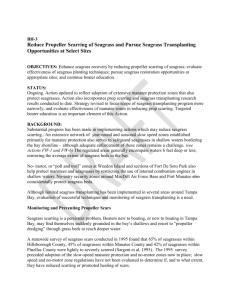Corsican seagrass detritus: an opportune shelter or a copepod
advertisement
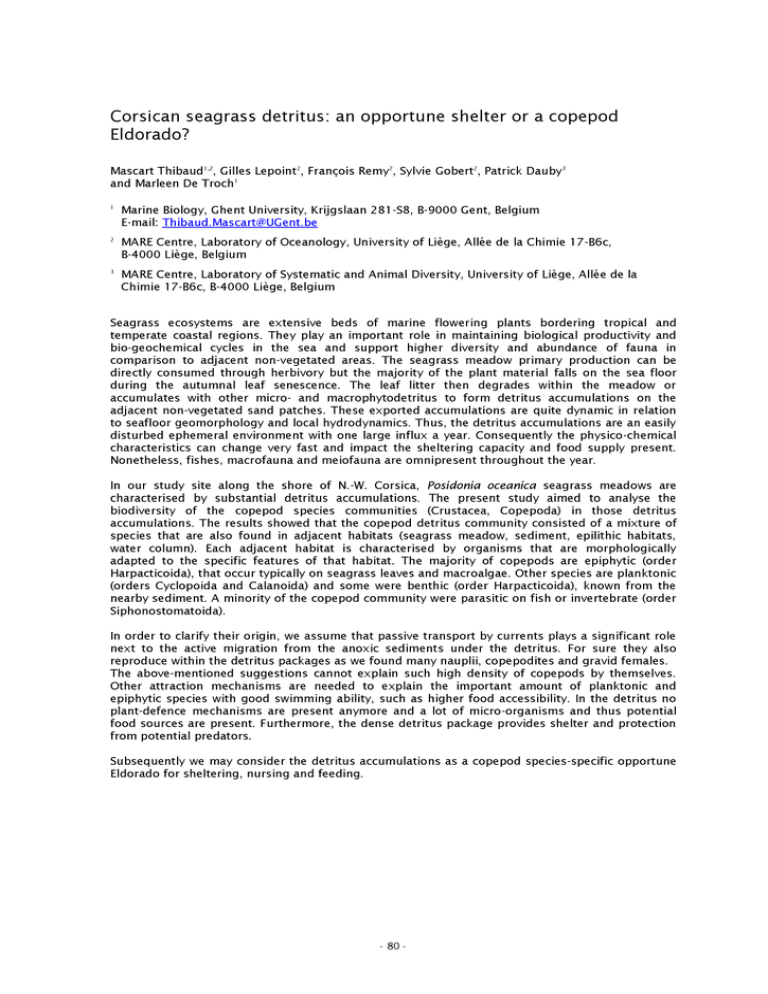
Corsican seagrass detritus: an o p po rtune shelter or a copepod Eldorado? Mascart T h ib a u d 12, Gilles Lepoint2, François Remy2, Sylvie G obert2, Patrick Dauby3 and Marleen De T ro ch 1 1 Marine Biology, Ghent University, Krijgslaan 2 8 1 -S8, B-9000 Gent, Belgium E-mail: T h ib a u d .Mascart@UGent.be 2 MARE Centre, Laboratory o f Oceanology, U niversity o f Liège, Allée de la Chimie 1 7-B6c, B-4000 Liège, Belgium 3 MARE Centre, Laboratory o f Systematic and Anim al Diversity, U niversity o f Liège, Allée de la Chimie 17-B6c, B-4000 Liège, Belgium Seagrass ecosystems are extensive beds o f marine flo w e rin g plants bordering tro p ica l and tem perate coastal regions. They play an im p orta nt role in m aintaining biological p ro d u c tiv ity and bio-geochem ical cycles in the sea and su pp ort higher d ive rsity and abundance o f fauna in com parison to adjacent non-vegetated areas. The seagrass meadow p rim ary production can be d irectly consumed th ro ug h herbivory but the m a jo rity o f the plant m aterial falls on the sea flo o r during the autum nal leaf senescence. The leaf litte r then degrades w ith in the meadow or accum ulates w ith o the r micro- and m acrophytodetritus to fo rm d e tritu s accum ulations on the adjacent non-vegetated sand patches. These exported accum ulations are quite dynam ic in relation to seafloor g eom orphology and local hydrodynam ics. Thus, the d etritus accum ulations are an easily disturbed ephem eral environm ent w ith one large in flu x a year. C onsequently the physico-chem ical characteristics can change very fast and im pact the sheltering capacity and food supply present. Nonetheless, fishes, m acrofauna and m eiofauna are om nipresent th ro u g h o u t the year. In our study site along the shore o f N.-W. Corsica, Posidonia oceanica seagrass meadows are characterised by substantial d e tritu s accum ulations. The present study aimed to analyse the b io dive rsity o f the copepod species com m unities (Crustacea, Copepoda) in those detritus accum ulations. The results showed th a t the copepod d etritus co m m un ity consisted o f a m ixture o f species th a t are also found in adjacent habitats (seagrass meadow, sedim ent, e p ilith ic habitats, w ater column). Each adjacent habitat is characterised by organism s th a t are m orphologically adapted to the specific features o f th a t habitat. The m a jo rity o f copepods are epiphytic (order Harpacticoida), th a t occur typ ically on seagrass leaves and macroalgae. O ther species are planktonic (orders C yclopoida and Calanoida) and some were benthic (order Harpacticoida), known from the nearby sedim ent. A m in o rity o f the copepod co m m un ity were parasitic on fish or invertebrate (order Siphonostom atoida). In ord er to clarify th e ir origin, we assume th a t passive tra n s p o rt by currents plays a sign ifican t role next to the active m igration fro m the anoxic sedim ents under the detritus. For sure they also reproduce w ithin the d e tritu s packages as we fo un d many nauplii, copepodites and gravid females. The above-m entioned suggestions cannot explain such high density o f copepods by themselves. O ther attraction mechanisms are needed to explain the im p o rta n t am ount o f planktonic and epiphytic species w ith good sw im m ing ability, such as higher food accessibility. In the d e tritu s no plant-defence mechanisms are present anym ore and a lot o f m icro-organism s and thus potential food sources are present. Furtherm ore, the dense d e tritu s package provides shelter and protection from potential predators. Subsequently we may consider the d e tritu s accum ulations as a copepod species-specific opportune Eldorado fo r sheltering, nursing and feeding. - 80 -
